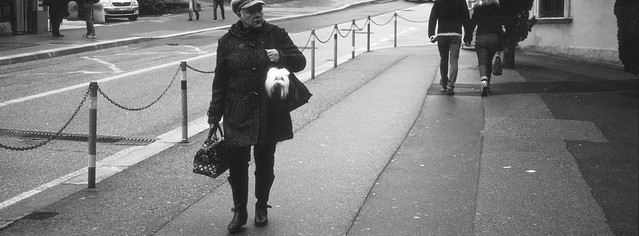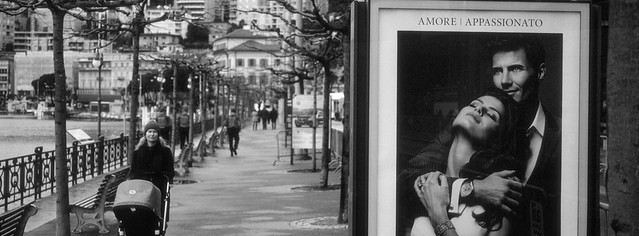in
GAS , Tuesday, September 16, 2014
Yep. Gear Acquisition Syndrome is peaking dangerously in the first world. The moths are circling the flickering flame called Photokina, the biannual high temple of photographic consumerism and gear lust. Fur is flying on the internet fora, as photo geeks of all sizes descriptions hurl invective at each other over the champions they are backing from the Houses of Canon, Nikon, Olympus, Fuji, Sony, Ricoh et al. More well-off photo geeks are disdainfully ignoring these champions of Hoi Polloi and are (with dangerous courtesy) debating the merits of Leica, Alpa, PhaseOne, Hasselblad.
It’s kind of entertaining to watch, especially when compared with Work, but after a week of using just a humble little Minox 35ML (and realising that focus and aperture ring markings were meant for eyes less, er, mature than mine), and having lots of fun with it, I can’t really get all that excited about all these latest electronic marketing iterations. I’ve also just cast off quite a large amount of digital gear, in the biggest sell-off I’ve ever done.
Oh, but I’m not immune to G.A.S. It’s just in my case it’s getting seriously, but seriously twisted.

This, above, is basically a very heavy, very solid metal box to which a lens board is screwed. The lens board features a stone-age Copal shutter and a lovely, but equally stone age Schneider lens. On top of the box is a film winder, and a film counter - well sort of, actually it’s a dial you have to remember to set for yourself. And perched on top of it is an accessory viewfinder which is of legendary quality. The lens is vertically offset from centre by 8mm (“8mm permanent shift”) which sounds crazy but would make a deal of sense to most dedicated wide-format photographers (I don’t much care for “panoramic”, it doesn’t mean the same thing). Oh, and you can pull the back off and drop in a roll of 120 film, assuming you can find one. Oh, and one last thing. A price tag that would make fellow Teutons Leica gasp in amazement.
Meet the Linhof Technorama 612PC II, the device of my dreams.
I don’t want one of these just for the sake of it, but rather because the 612 “cinemascope” frame is absolutely natural to me. I confirmed my hunch about this with my ill-fated experiment with the Belair X 6-12, and recently with the iPhone application 645Pro. Although I dearly love my XPan, sometimes, often even, it’s too wide. Sure, you can crop, but cropping an XPan frame down to a 2:1 ratio loses a lot of area, and on 35mm film it’s getting borderline for biggish prints. For the same reason, the 617 cameras don’t appeal that much.
I first discovered the existence of the 612 format through New Zealand photographer Andris Apse’s work. There aren’t actually many practitioners of the format to be found. Sure, there are gear geeks on Flickr who’ll pick up anything and run a few rolls of expired C41 film through it, photographing whatever and thing it’s art. But very few people have made the form their own (a recent exception I discovered is Alberto Bregani, whose mountain B&W work is quite gorgeous).
Anyway, there’s no way in this life I’m going to find nearly $10,000 to buy one of these new. But with my recent gear recycling, I’m dangerously close to having freed up enough cash to get one of the few on offer on eBay (actually, not so long ago I missed an absolute bargain there).
Yes, but. It takes 120 film. The only 120 reversal film still produced is Provia 100F (actually pretty good) and Velvia 100 (not my thing, really). It’s far too heavy to consider taking on my rare but vital polar trips, especially after I swore blind I was going to just take a point-and-shoot after my last trip. It is absurdly expensive. And really, unless I get off my backside and start actually promoting and displaying my photography, it’s total overkill. I’ve got the XPan. I can do stitching (I was a very early adopter of pinheads, back around ‘95). I could buy one of those mega Sony A7r thingies for the SAME MONEY, for heaven’s sake. And yet, finally, it all gets pretty meaningless, taking photos without much sense of direction or purpose.
And film ?? C’mon, digital blows it out of the water, surely ? Well, I’m not so sure. I just happened to dig out an B3 size folio album of prints I made from photos taken in Santorini and Naxos, back in 2002, on Provia 100F using XPan and Canon T90. I haven’t looked at these for ages, and I was really taken aback at the clarity and sense of form in the prints. Although the difference isn’t that huge, actually they look better than prints from digital (well, except from the Sigmas). It doesn’t make a lot of sense, and all the experts will tell me I’m nuts or making things up, but really, the results speak for themselves.
Clearly, I was born 15 years too late. I missed the glory years of wide format film, and maybe trying to get back to it now is tilting at one windmill too many, even for me. Maybe I should get back to the Photokina frenzy and inoculate myself against this craziness.
Meanwhile, I have actually finally made another decision and acquired some other new gear. More on that soon. It’s either going to have been a very good or a very bad idea. And it involves film.









